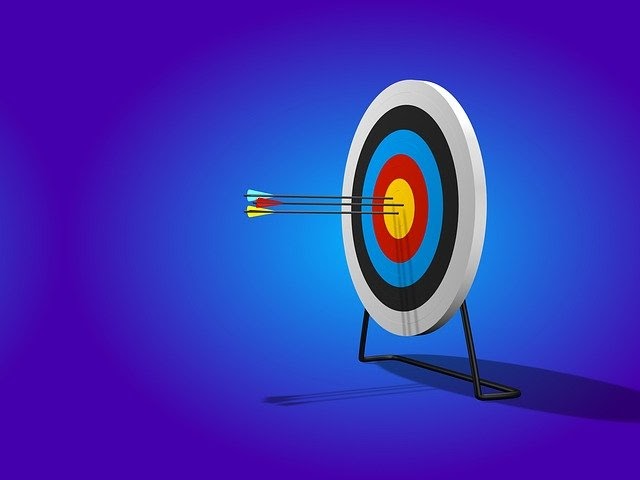Metrics and key performance indicators (KPIs) are crucial benchmarks for any SaaS company that wants to track its growth. They serve as a blueprint for assessing which way your business is headed. If it’s headed in the right direction, why? What have you done right? If it’s headed in the wrong direction, that’s important to assess as well.
There are many standard metrics that companies use to track their progress. But if you focus on the wrong ones, or the ones that are wrong for your particular business, you run the risk of wasting a lot of time and resources. When all is said and done, there are a few KPIs that jump right off the page when assessing where you stand and where you might be heading.
Before we discuss those metrics, let’s start with WHY we track these.

Why Is It Important For SaaS Companies To Track Their KPIs?
The success of SaaS (software-as-a-service) directly correlates with the pain of legacy software systems and services. Traditionally, when software was installed on a device, it stayed for many years. This meant the user was stuck with a static, difficult program that remained in operation long after newer, more advanced programs came along with technical superiority. Certain enterprises still use this method, though most have migrated to the SaaS model.
The allure of SaaS is that the software is always up-to-date. By paying a licensing fee on a rolling basis, the customer can switch it on / off, upgrade, or downgrade depending on their needs. It takes the risk out of choosing a new software for your organisation, as customers no longer need to pay a lump sum for a lifetime commitment. What’s more, it allows thousands of new software companies to get a foot in the door of businesses willing to try something new. Historically, companies are very reluctant to implement new software without going through a great deal of bureaucracy.
However, simply being able to close sales and scale is not enough. Your software must capture your customer’s imagination. It must maintain a robust level of user engagement and retention through new features or content. And even then, paying close attention to the right KPIs is what will make the killer SaaS companies stand out from the crowd.
The KPIs SaaS Companies Should Be Paying Attention To
Below are the basic KPIs that capture the underlying performance and strength of SaaS companies. Each should:
- indicate a correlation with strategic goals, or
- highlight a need to implement remedial action.
1) Total Contract Value (TCV)
Why: Indicates the stickiness and gross value of customers. The higher the better.
TCV stands for Total Contract Value and looks at the value of a customer’s contract over its entire duration.
If a customer commits to a 3-year contract of €90,000, then the contract has a TCV of €90,000. If at the end of their contract, that same customer purchased a different licence, paying €60,000 for 2 years, the TCV of that contract would be €60,000.
2) Annual Contract Value (ACV)
Why: Indicates the annual value of customers. The higher the better.
Annual Contract Value (ACV) looks at the value of a customer’s contract over 12 months. This metric provides a benchmark for comparison with TCV, customer acquisition cost (CAC), and annual costs. This then gives you a vantage point for answering the core question: does your customer revenue generate a profit?
For example, if a customer committed to a 3-year contract of €90,000, that contract would generate €30,000 per year of ACV, over the course of 3 years. (€90,000/3 years.) TCV and ACV measure all revenue generated during the chosen timeframe, including one-off payments and charges. An ideal model will attract multi-year contracts. Comparing both KPIs is an excellent way for SaaS or really any company to assess the strength of their proposition.

3) Monthly Recurring Revenue (MRR)
Why: In SaaS, MRR is the most telling KPI for assessing your software’s performance and ultimate customer satisfaction. If your MRR is increasing, you’re doing something right.
For example, the customer mentioned above with a TCV of €90,000 has an MRR of €90,000/36 = €2,500. MRR is essential for understanding the growth of your business across all contract agreements. And with a good handle on customer acquisition and churn rates, you can use it to extrapolate and predict future revenue.
It is unusual in B2B for SaaS to have a one-month only commitment. Most have annual if not multi-annual contracts or a mixture of all of the above. MRR allows for contract value normalisation tracking.
However, assuming a customer has a monthly contract and can cancel at any time, then MRR is a pure metric for your software’s performance and customer satisfaction. If the customer has a yearly or multi-yearly contract, then you should assess MRR, ACV, and TCV as well when reviewing Revenue performance. Whichever of these metrics matches your billing cycle, that’s what you should use when assessing cash performance.
4) Average Selling Price (ASP)
Why: In SaaS, a high ASP makes high-touch enterprise sales strategies viable. A low ASP forces you towards a self-service model.
ASP stands for Average Selling Price, and measures the average initial price that customers pay at the time of sales conversion. Understanding your ASP is the key to determining whether your SaaS start-up will have a self-service, transactional, or enterprise sales model.
Your ASP places a limit on the how much of a Customer Acquisition Cost (CAC) you can justify. Lower ASPs mean your company will need a higher number of customers. This translates into large target markets, more leads, more pipeline, higher conversion rates, shorter sales cycles, and so on. A high volume of customers also necessitates more customer self-service. This means your model will require more automation and less human labour, because labour is expensive and has poor economies-of-scale.
The key to getting the SaaS sales model for your company right is to strike the perfect balance between ASP and CAC through operational efficiency and customer market focus. Calculating your ASP is a simple enough equation. If you closed 5 deals in January for an ACV of €5,000, then your ASP is €1,000 (or €83 per month).

5) Customer Acquisition Cost (CAC)
Why: Knowing how much it costs to acquire a customer is key to understanding where your break-even point is, and what your ASP needs to be.
Customer Acquisition Cost is one of the leading advisory KPIs, designed to tell SaaS companies how much they need to spend to acquire a single new customer. It is determined by two factors:
- The costs of generating a lead (usually determined by marketing expenses)
- The costs of converting that lead into a customer (usually determined by the salaries of salespeople)
Typically, the easiest way to work out your CAC is to bundle together the total sales and marketing expenditure in a given period. Then, divide it by the total number of new customers.
For example, say you spent €3,000 combined on sales and marketing in a given month. In that same month, you closed 5 new customers. That month’s Customer Acquisition Cost would be €600 per customer.
CAC Payback Period
Customers will only become profitable when they’ve generated enough revenue to cover their acquisition cost. The formula for determining CAC Payback Period (also referred to as Months to Recover CAC) is straightforward. Just divide the cost of acquiring a customer by the monthly revenue they generate. The resulting number is how many months it will take you to break even for that one customer.
Based on our example from above, with a CAC of €600 and an ASP of €1,000, it’ll take just over 7 months for each customer to cover their cost of acquisition. If you’re selling a service where most customers stay for 1 year or less and then leave, then this is terrible. You will have barely broken even before your customer leaves. And then you’ll have to start the acquisition process all over again. However, if you are selling a multi-year contract with a high degree of probability of renewal, then 7 months is fine.
For most SaaS businesses, the CAC KPI only includes costs from their marketing and sales teams. They deliberately exclude costs from the customer success team. CAC is designed to measure your ability to generate new revenue from sales and marketing expenditure. Meanwhile, customer success teams are typically involved in upselling, cross-selling and encouraging renewals.

6) Customer Churn
Why: If you have a churn rate of 30% and a new growth rate of 20%, you’re going out of business. If a customer leaves, downgrades, or upgrades, it’s crucial to figure out why.
As a subscription-based business, SaaS companies depend on new customer acquisition for growth, and churn levels are one of the most important KPIs for alerting you when you’re doing something wrong. Customer churn measures the rate at which your existing customers entirely cancel their subscription to your service. For example, if we start January with 20 paying customers, but finish the month with only 19, the customer churn rate for the month was 5%. Churn calculations are tricky to get correct, and can be statistically misleading. Therefore, they should be calculated in a number of scenarios.
Annual Customer Churn Rates
It’s important to track both monthly and annual customer churn rates, as a monthly churn that seems reasonable up close can quickly turn into a crippling annual churn. If a 5% monthly churn rate continues in the same vein, it translates into a massive 54% churn rate over the course of the year.
Each month, there’s likely to be a portion of your customer base that are unable to churn, typically because they’re still bound by their contract. If for example you bill each ACV upfront and the customer is bound for a minimum of 12 months, the only churn that matters is renewal term churn.
Churn Cohorts
Measuring churn isn’t a goal in its own right: we want to understand the why behind churn, and fix it. By grouping together customers with similar characteristics (e.g. month joined, length of time they’ve been a customer, etc.), we can create churn cohorts to try and identify common risk factors for churn.
Customer Retention
The inverse of Churn can be expressed as Retention. Gross retention equals the amount of business you renew in comparison to the previous sale amount. It does not take account of any customer revenues, i.e expansions from existing clients. 100% retention is the desired result and an amount which cannot be exceeded. However, the metric Net Retention can exceed 100%, and calculates the percentage of successful upsells and expansion to pre-existing customers.
7) Invoiced sales
Why: Your cashflow follows your billing frequency. Knowing what direction your cashflow is headed is a fundamental requirement in any business.
Not all SaaS companies bill for their software solution each month as it is consumed. Some fortunate few can bill each ACV – or, even better, TCV – upfront. Salesforce is a good example of this. If your billing frequency is different to your revenue recognition frequency, then MRR might tell you if your customer base is growing. However, it won’t tell you anything about where your cash is going. Tracking your billing metrics allows you to unlock cashflow visibility.
If you want to know what your net cash position at the end of the year will be, take your invoiced sales, subtract expenses, and add this to your current net cash position.






